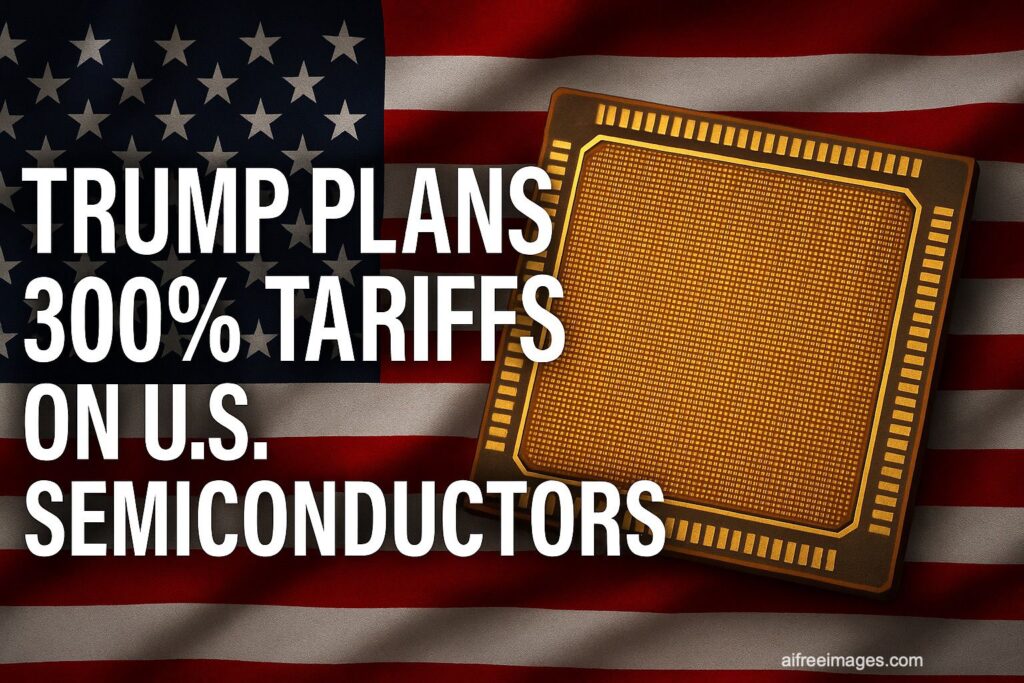U.S. President Donald Trump has raised the prospect of imposing tariffs of up to 300% on imported chips and semiconductors, a measure that could be announced by the end of August, according to reports cited by outlets such as Revista Cloud. True to his unpredictable style, Trump continues to reshape industries across the globe with policy shifts that are as sudden as they are far-reaching.
Speaking aboard Air Force One, the president confirmed that tariffs on strategic sectors such as steel and semiconductors are on the table. These measures are being considered under Section 232, a U.S. trade law that authorizes restrictions on imports deemed a threat to national security.
“I’ll be setting tariffs next week and the week after, on steel and, I would say, chips. Chips and semiconductors. We’re going to have a rate that is going to be 200%, 300%,” Trump declared.
A looming threat to the tech industry
If enacted, such extreme tariffs would be devastating for large parts of the technology sector, particularly for small and mid-sized companies unable to absorb the steep cost increases. But even major U.S. corporations that rely on imported semiconductors would feel the squeeze, raising the question of whether this policy could backfire domestically.
The proposed tariffs are part of the White House’s broader strategy to strengthen U.S. semiconductor manufacturing and reduce reliance on Asian supply chains. Chips are viewed as critical not only to defense and telecommunications but also to the backbone of the digital economy.
However, critics point out a blind spot in this strategy: many of the raw materials essential for semiconductor manufacturing are sourced outside the U.S.. Without addressing that dependency, tariffs alone could destabilize the supply chain rather than secure it.
Possible exemptions for U.S.-based production
Previous reports indicated that tech giants such as TSMC, Samsung, SK Hynix, Apple, and NVIDIA had already secured exemptions from earlier, lower tariffs by committing to invest in manufacturing facilities on U.S. soil.
Industry analysts suggest that Trump’s new policy may include similar exemptions, offering tax breaks and incentives to companies that establish production lines within the United States. Such investments, however, would require tens of billions of dollars and years to bring online.
Timeline and next steps
The outcome of the Section 232 investigation into semiconductors is expected by the end of August. Should the tariffs move forward, it would mark the start of a new chapter in U.S. industrial and trade policy.
For global tech giants, the decision could force a massive reorganization of supply chains, potentially driving up the prices of consumer electronics across the board — from smartphones and laptops to servers powering cloud data centers and AI applications.
FAQs
1. What is Section 232?
Section 232 of the U.S. Trade Expansion Act allows the government to impose trade restrictions on imports that threaten national security.
2. Why does Trump want such high tariffs on chips?
The administration aims to boost domestic semiconductor production and curb dependence on Asian supply chains in this strategic sector.
3. Which companies would be most affected?
Firms without U.S.-based manufacturing capacity — particularly small and mid-sized businesses — would face the brunt of the tariffs.
4. How would this impact consumers?
Consumers could see higher prices on a wide range of tech products, from smartphones and electric vehicles to data center hardware and cloud services.

